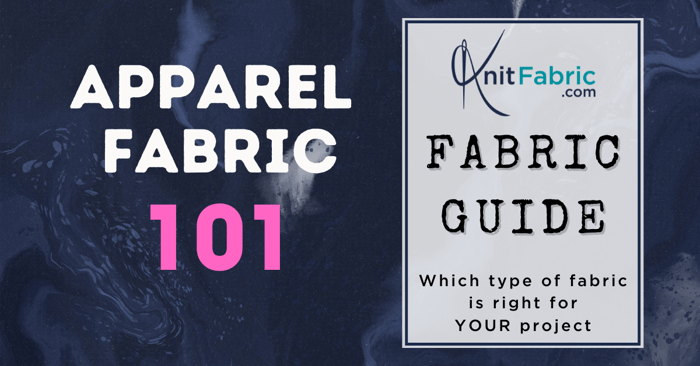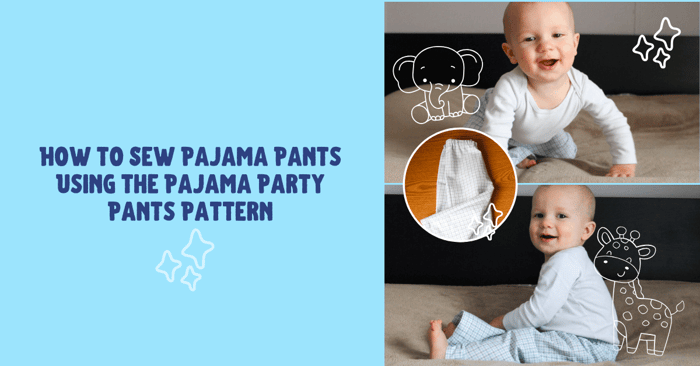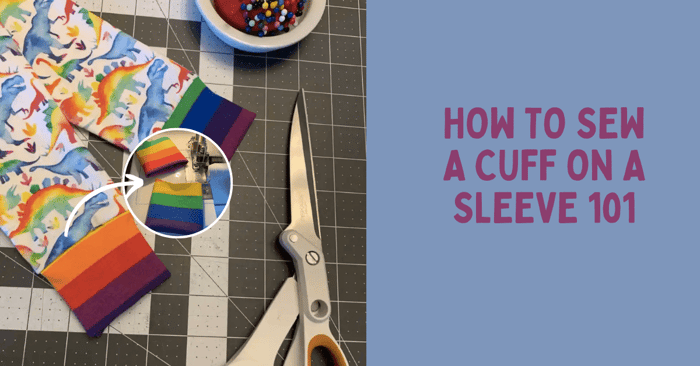
Apparel Fabric Guide: Types & Tips
We love using apparel fabric here at Peek-a-Boo Pattern Shop and stock a ton of great apparel fabrics at our sister shop KnitFabric.com. Our Knit Fabric 101 Guide briefly overviews many of these fabrics. This post today is meant to give you even more information to help you choose the right fabric for your project according to the purpose of the clothing and season or weather. We have also included some sewing tips for different fabrics so you can work with them effortlessly. So, whether you're a fashion enthusiast or an aspiring designer, this guide will give you all the information you need to select the perfect fabric for your next project.
Understanding Apparel Fabric
Apparel fabrics encompass a wide range of materials used for making clothing and accessories. When it comes to choosing the right fabric, comfort and style are crucial factors to consider. The quality of the fabric directly affects the durability of your clothes. Additionally, different fabrics possess unique properties that impact their look and feel. In the world of fashion design, fabric selection plays a significant role in determining the overall aesthetic of a garment. By understanding the definition and importance of apparel fabrics, you can make informed choices for your wardrobe. A couple of broad categories of apparel fabrics are knits and wovens.
Knit v. Woven Fabric
Knit fabrics offer stretch and flexibility, while woven fabrics provide stability and structure. The former is known for comfort and breathability, while the latter boasts durability and wrinkle resistance. Knit fabric is commonly used in activewear and casual clothing, while woven fabric finds its place in dressier garments. The right fabric choice depends on the garment's desired look, feel, and function. Understanding different fabric characteristics empowers you to make informed decisions when purchasing or creating clothing.
Popular Knit Apparel Fabrics
Of course, knit fabrics are our thing here so we'll start with them. They make excellent apparel fabrics for comfortable clothes like tops, dresses, pajamas, sweatshirts and more. We have a broad range of Sewing Patterns designed for knit fabric as well. Some of the most popular knit fabrics include cotton lycra, french terry, double brushed poly, sweatshirt fleece, interlock, bamboo, rayon, and rib knit..
Cotton Lycra Fabric
Cotton Lycra fabric, a cotton and spandex blend, offers excellent stretch and shape retention. Known for its breathability, softness, and comfort, it is widely used in activewear, sportswear, and casual wear. This highly durable and flexible fabric makes it a popular choice for various clothing items. Machine washable and easy to care for, Cotton Lycra fabric comes in a wide range of vibrant colors and eye-catching prints to suit different design preferences. It's a versatile fabric that combines style and functionality.

French Terry Fabric
French Terry fabric is a beloved choice for many due to its soft, cozy, and breathable properties. This knit fabric is perfect for lightweight outerwear, loungewear, and activewear, providing comfort and style. The loops on one side of the fabric add a soft texture and enhance its moisture-wicking abilities. Plus, French Terry is easy to care for as it can be machine-washed and dried. With various colors and prints available, you can easily create unique and fashionable garments using this versatile fabric.

Double Brushed Poly Fabric
Double Brushed Poly Fabric is a soft and cozy fabric perfect for creating comfortable clothing pieces. This extremely soft fabric is soft and great for dresses, leggings, cardigans, tops, hoodies, and more. Whether you're looking for something casual or dressy, the Double Brushed Poly Fabric provides the comfort and style you need for your next project.

Sweatshirt Fleece
Sweatshirt fleece, a fabric perfect for cold weather apparel, offers a soft and cozy feel. Its smooth knit on one side and a brushed surface on the other provide added warmth. This versatile fabric, made from cotton or synthetic fibers like polyester or rayon, is commonly used for hoodies, sweatpants, and even blankets. Stay warm and stylish with sweatshirt fleece garments this season.

Interlock
Interlock, a type of double-knit fabric, offers several advantages for clothing. It is thicker and more stable than jersey knits, ensuring durability. With a smooth surface on both sides, the interlock is reversible and perfect for garments that need to look good inside and out. It's stretchiness and good drape make it ideal for fitted clothes. You'll commonly find interlock fabric in activewear, loungewear, and baby clothing. Additionally, it can be made from various fibers such as cotton, wool, and synthetic blends, affecting factors like breathability and durability.

Bamboo & Rayon
Bamboo fabric is known for its eco-friendly nature, hypoallergenic properties, and moisture-wicking capabilities. On the other hand, rayon is a soft and breathable fabric made from wood pulp, perfect for draping. Combining bamboo and rayon blends has gained popularity in the apparel industry. They are versatile and suitable for activewear, loungewear, and everyday wear. Incorporating these sustainable and comfortable fabrics into your wardrobe is a great choice.

Rib Knit
Rib Knit is a stretchy fabric commonly used for cuffs, collars, and waistbands. Its distinctive ribbed texture adds depth and interest to clothing. This versatile fabric can be made from various fibers, including cotton, wool, and synthetic blends. Rib Knit is available in different weights, from lightweight to heavy, depending on the desired look and function. Due to its stretchiness, this fabric ensures comfort and ease of movement. Incorporating NLP terms like "home decor" and "special occasion" allows you to use Rib Knit for various projects.

Popular Woven Apparel Fabrics
Interlacing fibers make woven fabric, and unlike knit fabrics, they don't have much stretchability. These types of fabrics are extensively used in clothing manufacturing. Our collection of woven fabrics features a range of materials such as quilting cottons, terry cloth, board short fabric, twill, poplin and many more. Woven fabrics come in various patterns and textures that can be used for different purposes. For instance, terry cloth is commonly used for towels and bathrobes while twill is often used for making jeans. Understanding the properties of each type of woven fabric can help you select the right one for your project.
Quilting Cotton for Clothing
Quilting cotton is a versatile and affordable fabric option for clothing. With a wide range of colors, patterns, and designs, it suits every style. Its lightweight texture makes it perfect for summer dresses and blouses, allowing for comfort and breathability. Quilting cotton is easy to care for with machine wash and dry capabilities and a popular choice for DIY projects like face masks and accessories. Its affordability and versatility make it a great choice for those looking to create stylish clothing without breaking the bank.

Denim
Denim, a sturdy cotton fabric widely used in the fashion industry, was originally intended for workwear due to its durability and strength. Although it can be found in various colors and patterns, classic blue denim remains the most popular choice. When shopping for denim, it's important to consider weight, stretch, and finish factors. From jeans and jackets to skirts and dresses, denim can be utilized in various clothing styles. Its versatility and enduring appeal make denim an essential fabric for fashion enthusiasts.
Check out our Kid's Denim Jacket, shown below.

Flannel
Flannel, a soft and cozy fabric, is commonly used for cold-weather clothing such as shirts, pajamas, and blankets. It's created by brushing wool, cotton, or synthetic fibers for a fluffy texture. Flannel fabrics offer different weights and textures, catering to various uses. Maintenance involves machine washing and drying, although special care may be required to prevent shrinking or pilling. Versatile in nature, flannel can be dressed up or down, making it an ideal choice for casual and formal wear.

How to Choose the Right Fabric for Your Clothes?
Consider the garment's purpose and occasion, ensuring it fits your lifestyle. Look at care instructions and durability, breathability, and comfort of different fabrics. Think about the desired look and feel to achieve with your clothing.
Factoring in the Season or Weather
When choosing apparel fabric, factoring in the season or weather is important. For summer, opt for lightweight fabrics, which help keep you cool. In colder seasons, heavier fabrics provide warmth and insulation. Don't forget to consider layering options for transitional weather. By selecting the right fabrics based on the climate, you can ensure comfort and suitability for any season.
Tips for Working with Different Fabrics
It's important to understand their characteristics when working with different fabrics. Test your sewing machine settings and needle to ensure they're suitable for your fabric. Choose the right thread and stitch length based on the type of fabric to achieve optimal results. Use appropriate tools and techniques to avoid fraying or damaging delicate materials when cutting the fabric. Additionally, consider pre-washing and ironing fabrics to prevent shrinkage or distortion after sewing. These tips will help you work with different fabrics effectively.
Sewing Tips for Different Fabrics
When sewing with different fabrics, remember a few important tips. First, choose the right needle for your fabric type to prevent any snags or tears. Additionally, using a proper thread weight will ensure even stitching and durability. Before starting your project, pre-wash and iron your fabric to avoid any shrinkage or wrinkles. It's also important to match your stitch type to the fabric's weave or knit for the best results. Lastly, consider using interfacing to stabilize and reinforce certain fabrics.
Which Fabric is Best for Your Next Sewing Project?
Consider the requirements of your sewing project when choosing fabric. Consider factors like weight, stretch, and drape for desired outcomes. Each fabric has different properties and uses, so research before purchasing. Experiment with mixing and matching fabrics for added texture and visual interest.
Conclusion
When it comes to apparel fabrics, understanding their characteristics and choosing the right one for your project is crucial. Whether you're working with knit or woven fabrics, each type has its own unique properties that can greatly impact the final outcome of your garment. Consider factors such as the garment's purpose and the season or weather when selecting the fabric. Learning sewing tips specific to different fabrics can help you achieve better results. So, the next time you embark on a sewing project, explore the wide variety of available apparel fabrics and choose the one that best suits your needs.
Thank you for joining us today to learn a little more about apparel fabric. Before you leave, make sure to join our Fabric Facebook Group and follow us on Instagram. Happy sewing!




